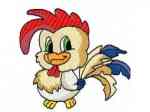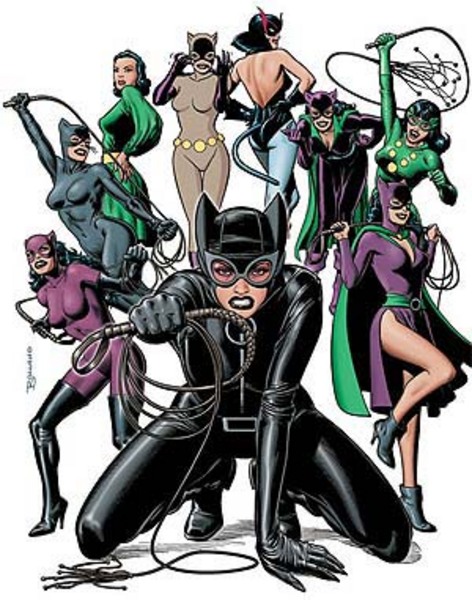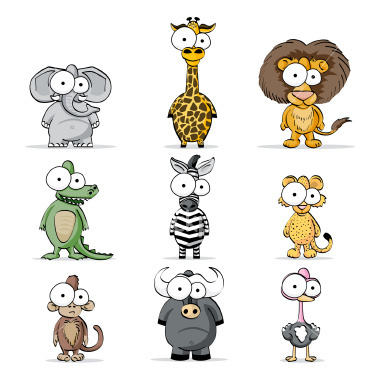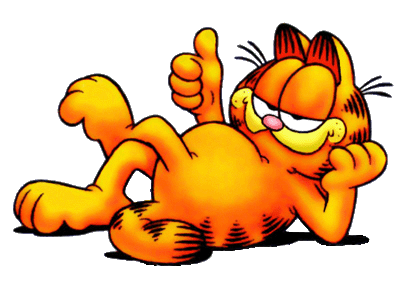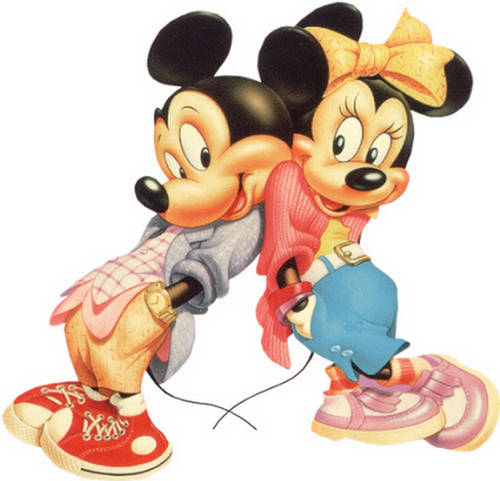Cartoon Animals Pictures Biography
Source (Google.com.pk)
Ezili Dantò (pronounced DAN-tor) is one of the singularly important mysteries served in Vodou, and is famous throughout the country of Haiti and into the Diaspora. She is the principle of motherhood, the strong and ferocious woman who works very hard for her family with little reward. She is associated with tough country ways and is fiercely independent. Ezili Dantò is considered to be an extremely tough lady, and can be wild and difficult to control. Dantò generally considers men to be of limited use to her, and will form affiliations with them based principally on opportunity, and also for the new life they help to produce. She is known to be the protector of women's affairs and has killed many a man who has dared to abuse one of her daughters. It is Dantò who will drop everything to come to the assistance of her children. In this, she is seen as very maternal, despite her "wild" nature.
Most "official" accounts of the Bwa Kayiman ceremony, which began the Haitian Revolution, credit the lwa Ezili Dantò as both receiving the sacrifice given as an oath to fight until death, and in declaring war against the French. In fact, popular legend has it that Dantò wrote the declaration of war in hog's blood on parchment made from the skin of a White French man. Legend further has it that Ezili refused to dismount the manbo who she had possessed before the following day; such is the significance of Assumption on August 15th in Haiti, and why Ezili Dantò is celebrated on this day. It is said that, after poisoning the White slave masters in their houses, Dantò fought alongside the men during the Haitian Revolution. This is Ezili Dantò. She rages and she destroys. She can be wild and vengeful. However, often this rage is turned inward and manifests in rather startling ways. Possessions by Dantò tend to be very moving affairs. She cannot speak, as she has no tongue, but utters the staccato "kay-kay-kay- kay" all the while gesturing to make herself understood; she is also deaf. Dantò does have an extreme manifestation in Ezili Je Wouj (literally, "Red-eyed Ezili") who speaks, but not in a manner most people would be used to understanding. In possession, the violence of Ezili Dantò can emerge without warning and with the elemental force of a torrential rain, sweeping away both just and unjust alike. Because of this, her rage is often equated with the thunderstorm, and in this Dantò is associated with another little-known Ezili called Kawoulo.
Dantò can be wild at times and difficult to control, especially if she smells the blood of a black pig, her favorite food. Vodouwizan are careful when offering such a pig to make sure and calm Dantò down as quickly as possible following the sacrifice in order to avoid danger... unless of course, the sacrifice was made in exchange for a specific work, in which case, the society may wish to keep her heated.
Some Vodouwizan maintain that Dantò is a lesbian. This is false, and a misconception due to a complete misunderstanding of her nature. In reality, Ezili Dantò is a hermaphrodite, having both male and female characteristics, partaking of both natures, and this is also one reason why she is so wild and difficult to control. Because of this, she will readily marry as many women as she does men. She may present as a woman, or as a man, and is capable of taking on whatever form is most pleasing to her human spouse.
Ezili Dantò is said to have several children. The first is her daughter who she carries in her arms. Most authors identify this child by the name Anaise, though this is not her "true" name. The child is also an hermaphrodite and is often said to be more fearsome than the mother. Many people overlook the child when dealing with the mother, not realizing that, since she is both mute and deaf, it is the child who is translating the prayers and demands of the servitor for the mother to begin with. Dantò has a son Ti-Jan Petwo who is also said to be her favorite lover. She is also the mother of several sets of Marasa, both twins and triplettes. Besides Jan, Ezili Dantò is known to have relations with Ogou Ze Wouj (who is himself a form of Ogou Badagris), Ogou Feray, Simbi Makaya, and the Bawon. Though served in the rites Petwo, her origin, like all lwa bearing the name Ezili, and most of the lwa of her family, is actually Dahomean, descending as she does from the spirit Aziri and similar entities of the Mami Wata cults of West Africa. Most notably, Ezili Dantò bears a great resemblance to the West African deity called Mami Tchamba. However, because she is considered to be so hot and wild, it is the rites of Petwo, not Rada, which contain her. Some people also claim her origins are in the traditions of the Native Tayino. While this is not impossible, there is no real evidence to support this. Contrary evidence of her origins being in Africa is plentiful, however.
Many people mistakenly confuse Ezili Dantò with other spirits surnamed Ezili who are served in the Petwo rites such as Ezili Balyan, Ezili Kè Nwa, or Ezili Mapyan, but this is erroneous. These are all her sisters; they are different lwa. However, Ezili Dantò does have an even more extreme manifestation in Ezili Je Wouj, and this is her most violent and dangerous manifestation. In some lineages, Ezili Dantò is known under a different name and by a slightly different manifestation called Manbo Zila (sometimes simply Manzila). Vodou adepts see this manifestation in the lithograph of Our Lady of Mount Carmel. When she arrives in the peristil she utters, not the rapid staccato "kay-kay-kay-kay", but a more guttural "ep— ep— ep" or "de-de-de-de". This particular manifestation has been traced by some houngan and manbo as having immediate roots on the Kongo.
The feud between Ezili Dantò and her sister Ezili Freda Daome is legendary.
They are considered to be mortal enemies, and Vodouwizan take great pains to separate their services, even to the point of not making offerings to them on the same day, if possible. Oral legend points to the long-standing hatred between these two powerful female spirits as the origin of Dantò's facial scars, her twa mak (three marks), which were made by Freda's jeweled dagger during one of their many battles.
Her colors are dark blue, red, and also multi-colors; the manifestation known as Manbo Zila is known to wear red and green. Dantò's day of the week is Tuesday, and she is feasted on several dates annually including July 16th (Saut D'eau), August 15th (Assumption), and December 24th (Christmas Eve) Her Catholic saint associations are with the following: Our Lady of Czestochowa (promounced "Chezo-ho-va") or Mater Salvatoris (the Black Virgin Mary who the Cubans call Santa Barbara Africanis), Our Lady of Lourdes, Our Lady of Perpetual Help, and Our Lady of Mount Carmel. With the exception of Our Lady or Lourdes, Ezili Dantò is most frequently associated with images of the virgin holding an infant, the Christ child, though Vodouwizan do not so identify this child. Rather, he is understood to be a she -Ezili's child Anaise. In the diaspora, Dantò may be found associated with Our Lady of Prompt Succor, and with the image of the Hindu divinity called Kali-Ma.
Ezili Dantò drinks kleren, dark rum, trempe, dark crème de cacao, dry red wine, and some kinds of beer, ginger tea, and black coffee. She is not offered sweetened drinks, as this calms her disposition to much. She is offered roasted peanuts and corn, rice and various beans, black beans and corn meal, rice with mushroom (djon-djon), boiled corn meal mush with peppers, and kasava bread. Dantò receives red or black (but not red and black) hens and the Kreyòl black pig (an indigenous pig, which, at one time, was all but wiped extinct by Americans). -It should be noted here that her real food is pork. Poultry, while exceptable as a substitute if pig is not available, is not really her food, being as it is considered more of a "snack" than a meal. Dantò carries a sharp dagger (sometimes several), and smokes a pipe with tobacco, cigars, cigarillos, and/or dark strong filterless cigarettes. She receives Florida or Kinanga Water (both common skin bracers), or in some houses, the perfume called Rev d'Or. She also greatly enjoys all sorts of dolls, especially twin dolls being as she herself is a mother of twins. Just as Freda's metal is gold, so Dantò's is silver. Unlike most Petwo lwa, she can be served in kwi bowls, just as on the usual wooden or tin-plates otherwise offered Petwo mysteries.
Cartoon Animals Pictures
Cartoon Animals Pictures
Cartoon Animals Pictures
Cartoon Animals Pictures
Cartoon Animals Pictures
Cartoon Animals Pictures
Cartoon Animals Pictures
Cartoon Animals Pictures
Cartoon Animals Pictures
Cartoon Animals Pictures
Cartoon Animals Pictures





